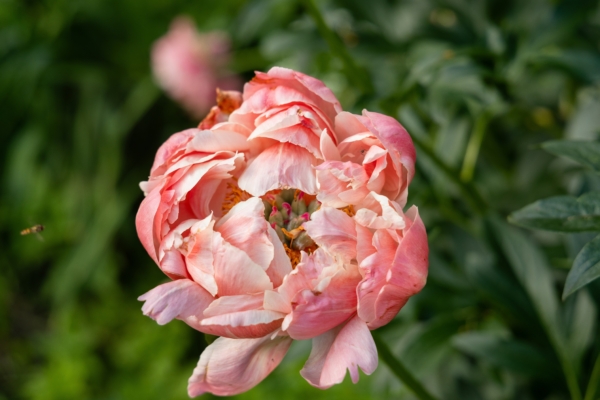Planting flowers and plants in the garden can beautify the environment and bring a sense of peace and joy, but taking care of plants requires patience and time. For those who are not fond of labor, having plants that can thrive without much care is definitely worth planting. According to experts, certain types of plants do not require meticulous care and can easily live for 50 years.
If you plant perennial plants, they usually grow year after year, unlike annual plants that die when the weather turns cold, requiring replanting in the following spring. This can save you a lot of time and energy.
However, not all perennial plants are the same. Some will bloom for several seasons and then gradually wither unless cared for, while others have strong vitality and can live for decades without much maintenance.
According to a report by the American magazine “Real Simple,” if you want to make a long-term investment in your garden, planting perennial plants is definitely better than planting annual plants. Here are some key advantages of planting perennial plants:
Blythe Yost, CEO, co-founder, and landscape designer of the American landscape design company Tilly, mentioned that although some perennial plants may have higher initial planting costs, in the long run, they are more cost-effective.
She said, “Plants like peonies and irises can easily survive for 50 years if left undisturbed. While daisies and thistles have shorter lifespans, their lives can be extended through regular division.”
Because perennial plants grow year after year, they are somewhat like set-it-and-forget-it plants in the garden. They will grow bigger and more beautiful each spring. If you are not the type of person who enjoys working in the garden throughout spring and summer, then perennial plants are the perfect choice.
However, Georgia Clay, the planting manager of the American horticulture company Monrovia, mentioned that even if you don’t replant new plants every year, you still need to give a little care to perennial plants, as they will grow best with proper pruning.
Yost pointed out that the flowering period of perennial plants is usually shorter than that of annual plants. Long-flowering perennials like daisies and thistles also have flowering and non-flowering dormancy periods.
She suggested pruning perennial plants in the autumn. This simple maintenance work can ensure they grow vigorously the following year.
If you want to attract butterflies, bees, hummingbirds, and other wildlife, planting perennial plants is more likely to fulfill your wish. Clay said that planting perennials such as lavender, marigolds, and sage can attract pollinating insects, which is a significant benefit.
Furthermore, in the long run, perennial plants can also help improve your garden. Their continuous growth and root systems help strengthen soil structure, prevent soil erosion, even in the face of climate change.
Perennial plants typically have stronger resistance to temperature and humidity changes, thus requiring less watering on a daily basis. This is why they can grow year after year. They thrive in their native environment, making it easy for you to plan and maintain your garden. Perennial plants also maintain a consistent appearance, meaning you don’t have to spend too much time on maintenance when the seasons change.
According to a report by the website “Lifehacker,” if you want to divide perennial plants, you can follow a basic rule of thumb – never divide them while they are still blooming, but once they have finished flowering and matured, they can be divided.
There are three main reasons for dividing plants. First, a plant’s growth has exceeded a specific space. Second, its appearance or flowering performance this year is poor and needs improvement. And third, you want to increase the number of plants, so you divide them to transplant elsewhere.
Some shrubs and flowers are not suitable for transplanting or dividing, including poppies, lavender, woody shrubs, and flowers like butterfly bushes, torch lilies, and coneflowers. In the case of woody shrubs like lavender, you may find some lower branches rooting themselves, which you can separate and transplant to other areas.

